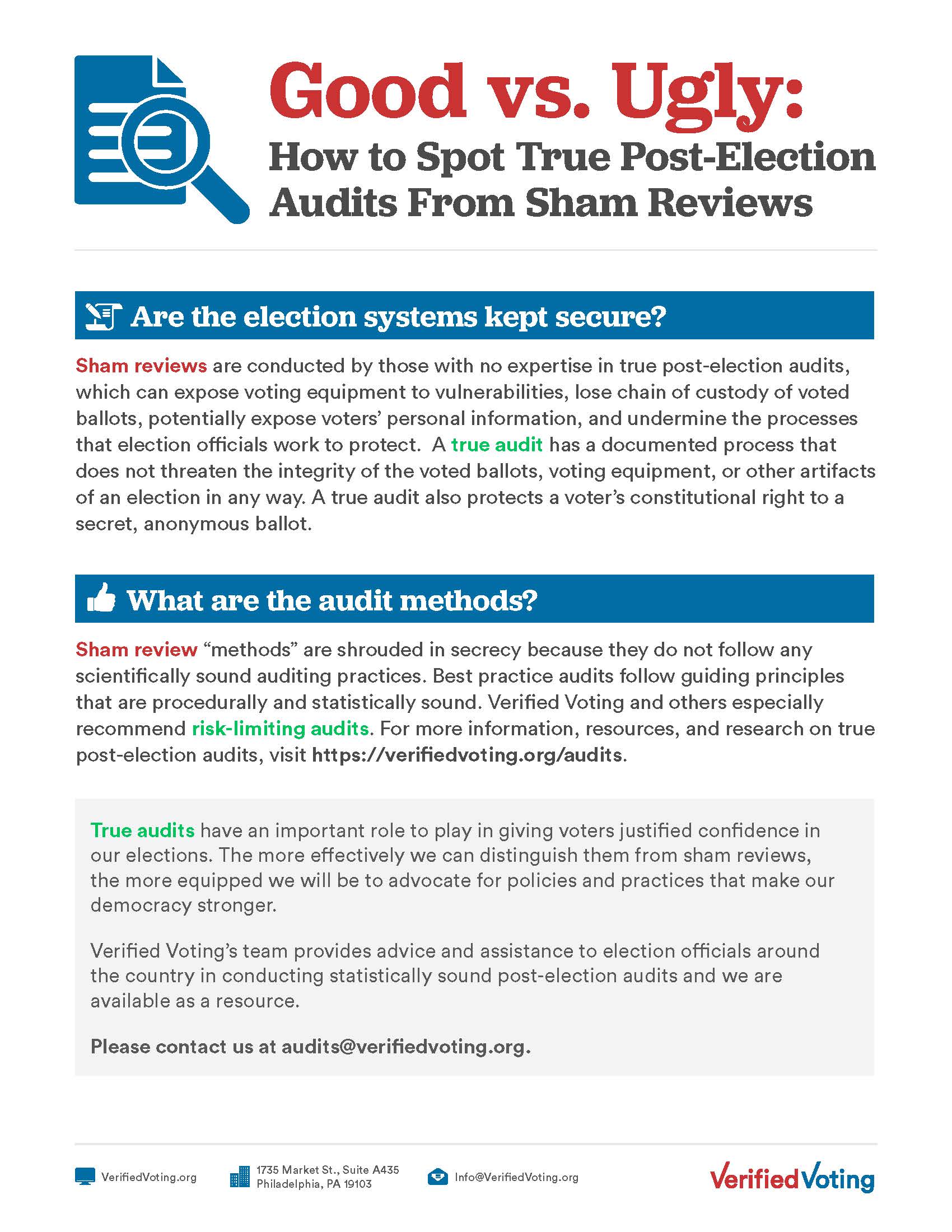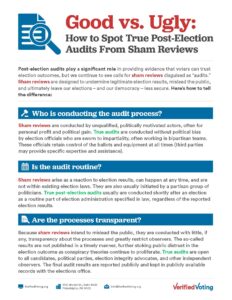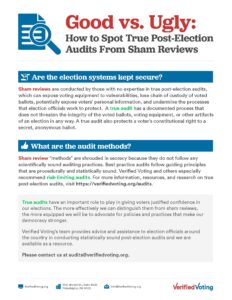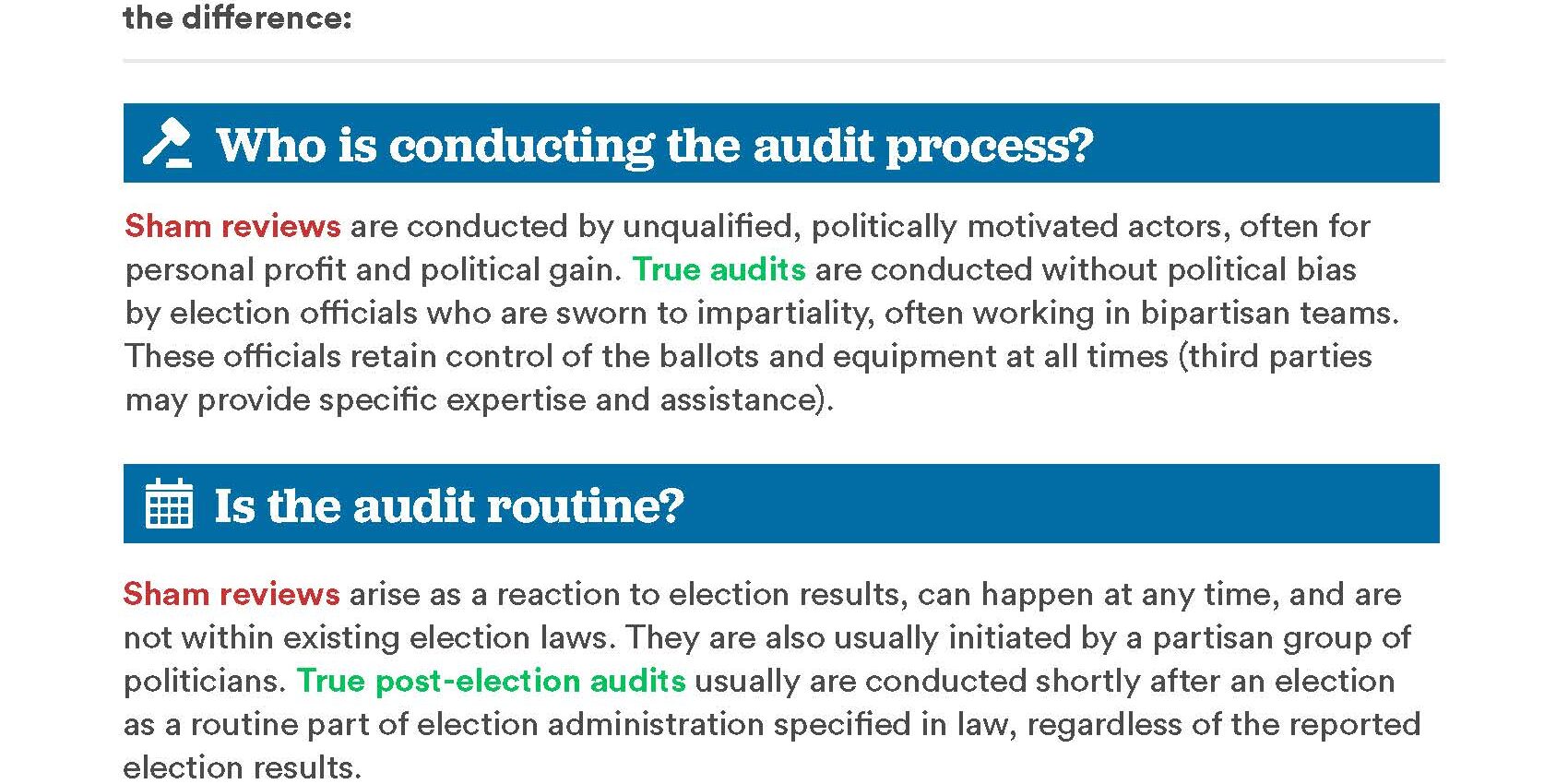
Resource
Good vs. Ugly: How to spot true post-election audits from sham reviews
Date: October 21, 2021
Author: Verified Voting
Issue: Post-Election Audit
Publication Summary
Post-election audits play a significant role in providing evidence that voters can trust election outcomes, but we continue to see calls for sham reviews disguised as “audits.” Sham reviews are designed to undermine legitimate election results, mislead the public, and ultimately leave our elections – and our democracy – less secure. Here’s how to tell the difference:
Who is conducting the audit process? Sham reviews are conducted by unqualified, politically motivated actors, often for personal profit and political gain. True audits are conducted without political bias by election officials who are sworn to impartiality, often working in bipartisan teams. These officials retain control of the ballots and equipment at all times (third parties may provide specific expertise and assistance).
Is the audit routine? Sham reviews arise as a reaction to election results, can happen at any time, and are not within existing election laws. They are also usually initiated by a partisan group of politicians. True post-election audits usually are conducted shortly after an election as a routine part of election administration specified in law, regardless of the reported election results.
Are the processes transparent? Because sham reviews intend to mislead the public, they are conducted with little, if any, transparency about the processes and greatly restrict observers. The so-called results are not published in a timely manner, further stoking public distrust in the election outcome as conspiracy theories continue to proliferate. True audits are open to all candidates, political parties, election integrity advocates, and other independent observers. The final audit results are reported publicly and kept in publicly available records with the elections office.
Are the election systems kept secure? Sham can expose voting equipment to vulnerabilities, lose chain of custody of voted ballots, potentially expose voters’ personal information, and undermine the processes that election officials work to protect. A true audit has a documented process that does not threaten the integrity of the voted ballots, voting equipment, or other artifacts of an election in any way. A true audit also protects a voter’s constitutional right to a secret, anonymous ballot.
What are the audit methods? Sham review “methods” are shrouded in secrecy because they do not follow any scientifically sound auditing practices. Best practice audits follow guiding principles that are procedurally and statistically sound. Verified Voting and others especially recommend risk-limiting audits. For more information, resources, and research on true post-election audits, visit https://verifiedvoting.org/audits/.
True audits have an important role to play in giving voters justified confidence in our elections. The more effectively we can distinguish them from sham reviews, the more equipped we will be to advocate for policies and practices that make our democracy stronger. Verified Voting’s team provides advice and assistance to election officials around the country in conducting statistically sound post-election audits and we are available as a resource. Please contact us at audits@verifiedvoting.org.


